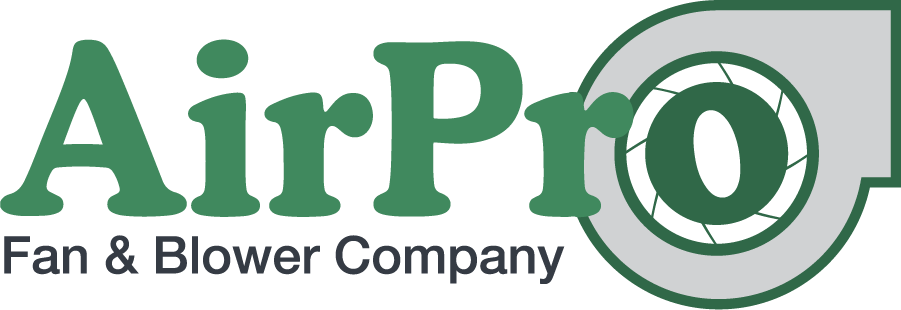The Fan Static Efficiency Equation
Fan static efficiency is the measure of the airstream’s potential, or optimal energy consumption, as determined by the ratio of power output to the power supplied.
Fan static efficiency is the measure of the airstream’s potential, or optimal energy consumption, as determined by the ratio of power output to the power supplied.
Time for some good news. As of April 2020, we are raising the bar on our Standard Warranty. Every product we make now comes with a 3-Year Gold Standard Warranty.
Which industrial fan type do you need in your process to achieve both optimal static efficiency and reliable operation? Considerations include what the fan is processing from clean air to mild particulate to highly abrasive materials, as well as volume and static pressure. Once you know those variables, you can make the fan static efficiency calculation to select the right fan.
If you’ve ever seen, heard or felt a pressurized industrial fan pulsing, you’ve probably also seen how damaging the resulting vibrations can be. Surgeless fan design moderates volume to avoid that costly scenario.
Controlling fan speed for optimal efficiency and performance is as easy as having the right equipment and making a few simple calculations. The ability to control fan speed rests on your motor drive. On direct-driven fan applications, the most common way to change speeds is with a variable frequency drive (VFD). On belt-driven fan applications, a VFD is also useful for simple speed changes. In the absence of a VFD, simple sheave ratio modifications should do the trick. And of course, you need to know the input frequency of the motor and a few simple ratios.
People always want to know about process fans, but it’s really all about process air. The term “process air” means air movement needed in an existing or new process to produce something else such as paper or chemicals. It’s a required element at some point in many industrial production operations.
If you work with a manufacturer that builds high-quality products, do a great job with the installation, and prioritize regular fan and blower maintenance, your industrial fan could last as long as 50 years. So what does all that mean? We break it down below and in Chet’s latest video.
Before we dive into HOW to balance an industrial fan, we should start with WHY. The answer is that the better we balance the wheel in a two-plane balance setup in the shop, the better it’s going to be when we put it into the complete fan assembly, run it up to full speed and trim balance it. And of course, ultimately, fan balance is essential to fan performance, safety, and maintenance.
Balance quality grades are among the more than 20,000 standards published by the International Standards Organization (ISO). These standards serve as generally accepted specifications for products, services, and systems, to ensure quality, safety, and efficiency.
The fan performance curve shows the pressure and flow rate that the fan will produce for any system connected to it. The actual fan performance is dependent upon the detailed design of each system. System designers calculate process air requirements, and the fan application engineer selects fans to meet those requirements, which are graphically represented by a fan curve.
With less than a month to go in the year, we can’t wait any longer to report the good news about our on-time delivery averages for 2019. It’s our first full year designing, building and shipping centrifugal fans and blowers with on-time delivery to industrial and OEM customers as our number one manufacturing metric. The results are making us as happy as Christmas morning.
When comparing forced draft versus induced draft industrial fans, the primary difference boils down to push versus pull. Forced-draft fans focus the pressure and volume at the outlet of the fan to push air through a system, creating positive air pressure. Industrial induced draft fans operate by focusing the pressure and volume at the inlet of the fan to pull air through a system.
All companies and jobs are not created equal. When you own the company, when you trust your colleagues, when you know your customers, you may start feeling right at home. The family culture at AirPro Fan and Blower Company is a win for our employee/owners, our customers and beyond.
